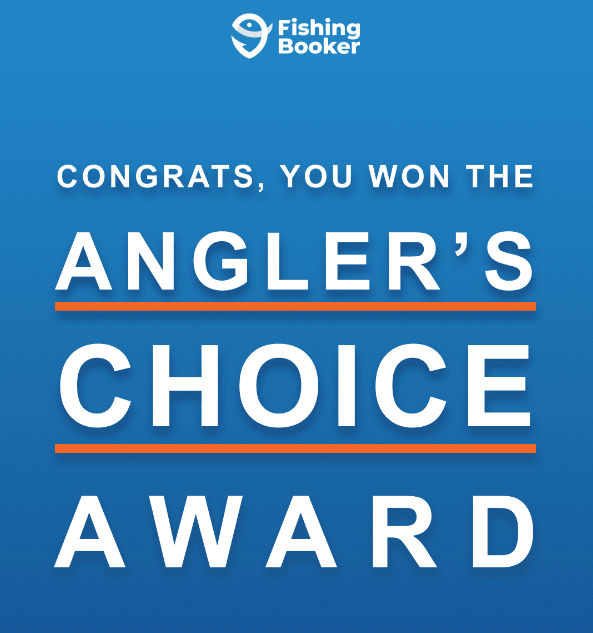
Article By: No Patience Sportfishing and Seafood
If you’re new to fishing and want to be very successful at it, this guide will help you get started. We’ll go through the essentials for fishing, how to choose the right fishing gear, different fishing techniques and strategies, and more.
SECTION 1: Introduction to Fishing
Fishing is a sport that involves using a rod and reel to catch fish. It can be done in both fresh and saltwater, and is a great way to relax and enjoy nature. There are many different types of fish that can be caught, such as tuna, yellowtail, mahi mahi, shark, rockfish, and more. Depending on the type of fish and the body of water, different fishing techniques and strategies may be necessary.
Fishing is a great way to spend time with friends and family. It can be a great bonding experience, and can help create lasting memories. Fishing is also a great way to get away from the hustle and bustle of everyday life, and just relax and enjoy the beauty of nature.
Whether you’re a beginner or an experienced fisherman, there are certain things you need to know in order to be successful. This guide will go through the essentials for fishing, how to choose the right fishing gear, different fishing techniques and strategies, and more.
SECTION 2: Essentials for Fishing
Before you go fishing, there are a few essential items you should have. These include a fishing license, a rod and reel, bait, tackle, and other necessary items.
A fishing license is required in most states, and can be obtained from a local Department of Natural Resources or a sporting goods store. Make sure to check the regulations for the body of water you’re planning to fish, as some states have special requirements.
A rod and reel are the main tools used in fishing. There are many types of rods and reels available, and it’s important to choose the right one for the type of fish you’re targeting. Before purchasing, consider the weight of the rod and reel, the type of line, and the action of the rod.
Bait and tackle are also essential for fishing. Bait can be live or artificial, and the type of bait should depend on the type of fish you’re targeting. Tackle includes hooks, weights, bobbers, and other items. It’s important to choose the right size and type of tackle for the species of fish you’re targeting.
Other necessary items include a net, a first aid kit, bug spray, sunscreen, and a cooler to store fish. It’s also a good idea to bring along a map of the area, a flashlight, and a cell phone in case of emergency.
SECTION 3: Choosing the Right Fishing Gear
When it comes to choosing the right fishing gear, it’s important to consider the type of fish you’re targeting and the type of water you’ll be fishing in. Different types of fish require different types of rods, reels, and tackle.
For saltwater fishing, you’ll need a heavier rod and reel, and a thicker line. You’ll also need heavier tackle, such as lead weights and larger hooks. For freshwater fishing, a lighter rod and reel and thinner line will be sufficient.
It’s also important to consider the type of water you’ll be fishing in. If you’re fishing in still water, you’ll need a rod and reel that’s designed for slow moving water. For fast moving water, you’ll need a rod and reel that’s designed for fast moving water.
SECTION 4: Fishing Techniques and Strategies
Once you have the right gear, it’s time to learn some fishing techniques and strategies. Depending on the type of fish you’re targeting, different techniques and strategies may be necessary.
One of the most common techniques for catching fish is casting. This involves casting the line out into the water and retrieving it in a jerking motion. Spinning is another technique that involves casting the line out and retrieving it with a spinning motion.
Jigging is another technique that involves casting the line out and jerking it up and down in the water. This technique is often used to catch bottom-dwelling fish, such as catfish.
Trolling is another technique that involves casting the line out and slowly retrieving it while the boat is moving. This technique is often used to catch large, deep-water fish such as salmon and tuna.
SECTION 5: Finding the Best Fishing Spots
Finding the right fishing spot can be the difference between catching a lot of fish or none at all. Different types of fish prefer different types of water, and it’s important to do your research before heading out.
Look for areas with structure, such as points, banks, rocks, vegetation, and drop-offs. These areas provide shelter and food for fish, and can be great places to find them. It’s also important to look for areas with good water clarity, as this will make it easier to see the fish.
If you’re fishing in a lake or pond, look for areas with deeper water. Fish tend to congregate in deeper water in search of food, and can be found in these areas.
If you’re fishing in a river or stream, look for areas with fast-moving water. Fish use the current to help them move around, and can be found in areas with fast-moving water.
SECTION 6: Understanding the Habitat and Weather Conditions
Understanding the habitat and weather conditions can be key to success when fishing. Different types of fish prefer different habitats and weather conditions, and it’s important to pay attention to these factors when choosing a fishing spot.
The habitat of the body of water you’re fishing in can have a big impact on the type of fish you can find. Different types of fish prefer different habitats, such as shallow water, deep water, vegetation, rocks, and more.
The weather conditions can also affect the type of fish you can find. Fish tend to be more active in warmer water, and can be found in deeper water during colder months. Pay attention to the weather and water temperature when choosing a fishing spot.
SECTION 7: Safety Tips for Fishing
Fishing can be a fun and enjoyable activity, but it’s important to be aware of safety tips when out on the water. Make sure to wear a life jacket, and check the weather before heading out. It’s also important to know the rules and regulations of the body of water you’re fishing in, and to be aware of the local wildlife.
Make sure to bring a first aid kit in case of emergency, and to stay hydrated and wear sunscreen. It’s also important to stay away from hazardous areas, such as fast moving water and deep water. Be aware of your surroundings and don’t take any unnecessary risks.
SECTION 8: Fishing Etiquette and Responsible Practices
Fishing etiquette and responsible practices are important when out on the water. It’s important to be respectful of the environment, other anglers, and the wildlife.
When fishing from shore, make sure to stay away from other anglers. Don’t cast your line too close to theirs, and be aware of the area around you.
When fishing from a boat, make sure to stay away from shallow areas and other boats. Don’t anchor your boat too close to other boats, and be aware of the area around you.
When fishing on a lake or pond, make sure to stay away from the shoreline. Don’t cast your line too close to the shore, and be aware of the area around you.
Make sure to practice catch and release when fishing in areas with limited fishing pressure. This will help maintain the fish population and ensure the sustainability of the fishery.
SECTION 9: Live Bait and Artificial Lures for Fishing
Live bait and artificial lures are essential for fishing. Live bait is often used to catch bottom-dwelling fish, such as catfish, and can be purchased from a local bait shop or online. Artificial lures are often used to catch larger fish, such as bass and trout, and can be purchased from a local tackle shop or online.
Live bait can be used in a variety of ways, such as on a hook, in a trap, or in a net. Artificial lures can be used in a variety of ways, such as on a jig, in a crankbait, or on a spinner.
When using live bait, it’s important to make sure it’s fresh. Live bait should be kept in a cool, dark place, and should be changed frequently. When using artificial lures, it’s important to make sure they’re in good condition. Artificial lures should be checked for wear and tear before each use, and should be replaced when necessary.
SECTION 10: How to Catch Different Types of Fish
Catching different types of fish requires different techniques and strategies. Different types of fish prefer different types of bait, and different techniques may be necessary to catch them.
Bass and other predatory fish can be caught using artificial lures, such as crankbaits and spinnerbaits. Catfish can be caught using live bait, such as worms and minnows. Trout and salmon can be caught using artificial lures, such as spoons and spinners.
It’s also important to consider the type of water you’re fishing in when choosing a technique. If you’re fishing in a lake or pond, casting is often the best technique. If you’re fishing in a river or stream, trolling is often the best technique.
SECTION 11: How to Prepare and Cook Fish
Once you’ve caught a fish, it’s important to know how to prepare and cook it. Properly preparing and cooking fish can help maximize its flavor and make it more enjoyable to eat.
When preparing a fish, it’s important to clean it properly. Use a fish scaler to remove the scales, and a sharp knife to cut off the head and remove the guts. Then, rinse the fish in cold water and pat it dry with a paper towel.
When cooking a fish, it’s important to consider the type of fish and the cooking method. Different types of fish are best cooked using different methods, such as grilling, baking, frying, and more. Make sure to season the fish with your favorite spices and herbs, and cook it until it’s cooked through.
SECTION 12: Conclusion
Fishing can be a fun and rewarding activity, and with the right knowledge and preparation, you can be very successful at it. This guide has gone through the essentials for fishing, how to choose the right fishing gear, different fishing techniques and strategies, and more.
By following the tips and advice in this guide, you’ll be well on your way to becoming a successful fisherman. So, don’t wait any longer – book a fishing trip with no patience, and get out on the water!
continue reading





